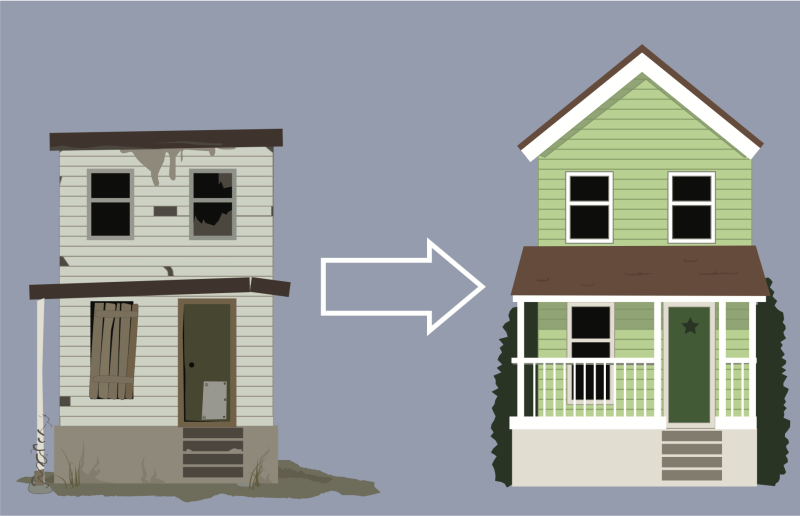
MBA: 2022 Was Worst Year On Record For IMBs

Annual report says IMBs, on average, lost money on originated loans for the first time in since report was founded in 2008.
- IMBs and mortgage subsidiaries of chartered banks lost an average of $301 on each loan they originated in 2022.
- That was down dramatically from an average profit of $2,339 per loan in 2021.
On average, independent mortgage banks (IMBs) and mortgage subsidiaries of chartered banks lost money on loans they originated in 2022, the first time that’s happened in the 14-year history of the Mortgage Bankers Association annual report on the industry.
IMBs and mortgage subsidiaries of chartered banks lost an average of $301 on each loan they originated in 2022, according to the MBA’s Annual Mortgage Bankers Performance Report, released Thursday. That was down dramatically from an average profit of $2,339 per loan in 2021, the report states.
“For the first time since the inception of MBA’s report in 2008, net production income was in the red in 2022, with losses averaging 13 basis points,” said Marina Walsh, CMB, MBA’s vice president of industry analysis.
The annual report follows the “abysmal” quarterly analysis released last month by the MBA. That report showed IMBs and mortgage subsidiaries of chartered banks reported a net loss of $2,812 on each loan they originated in the fourth quarter of 2022, down from a reported loss of $624 per loan in the third quarter of 2022.
At the time, the MBA said the numbers, in some instances, hadn’t been that bad in 11 years.
“The rapid rise in mortgage rates over a relatively short period of time, combined with extremely low housing inventory and affordability challenges, meant that both purchase and refinance volume plummeted,” Walsh said of the annual report’s results. “The stellar profits of the previous two years dissipated because of the confluence of declining volume, lower revenues, and higher costs per loan.”
Production revenues declined in 2022, but the bigger story, Walsh said, “was that production expenses ballooned to a study high of $10,624 per loan. Companies could not adjust their capacity fast enough. The number of production employees declined, but not at the same pace as origination volume. As a result, productivity in 2022 fell to a low of 1.5 closed loans a month per production employee.”
On the servicing side of the business, net financial income more than doubled in 2022, the report said. Higher loan balances pushed per-loan servicing fees higher, while servicing expenses dropped as serious delinquencies fell. In addition, valuation markups on mortgage servicing rights and slower prepayment activity contributed to servicing profitability, the report states.
The gains in servicing, though, were not enough to offset the substantial production losses. Combining both servicing and production operations, only 32% of companies were profitable in 2022, down from 98%t just two years prior.
“There is no denying the very difficult circumstances in which mortgage companies are still operating today,” Walsh said. “MBA’s forecast calls for mortgage volume to decline again in 2023 before an expected rebound in 2024 and 2025.”
Key Findings:
- Average production volume was $2.6 billion (8,371 loans) per company in 2022, down from $4.9 billion (16,590 loans) per company in 2021. On a repeater company basis, average production volume was $2.8 billion (8,848) in 2022, down from $5.0 billion (17,069 loans) in 2021.
- The average production loss was 13 basis points in 2022, down from a profit of 82 basis points in 2021. Since the inception of MBA’s Annual Performance Report in 2008, net production income by year has averaged 55 basis points ($1,261 per loan).
- The refinancing share of total originations (by dollar volume) decreased to 20% in 2022 from 46% in 2021. For the entire mortgage industry, MBA estimates the refinancing share last year decreased to 30% from 57% in 2021.
- The average loan balance for first mortgages reached a study-high of $323,780 in 2022, up from $298,324 in 2022. It’s the largest single-year increase in the history of the report.
- Total production revenues (fee income, net secondary marking income, and warehouse spread) were 333 basis points in 2022, down from 382 basis points in 2021. On a per-loan basis, production revenues were $10,322 per loan in 2022, down from $11,003 per loan in 2021.
- Total loan production expenses — commissions, compensation, occupancy, equipment, and other production expenses and corporate allocations — increased to $10,624 per loan in 2022, up from $8,664 in 2021.
- Productivity was 1.5 loans originated per production employee per month in 2022, down from 2.5 in 2021. Production employees include sales, fulfillment, and production support functions.
- Including all business lines, 53% of the firms in the study posted pre-tax net financial profits in 2022, down from 96% in 2021.




